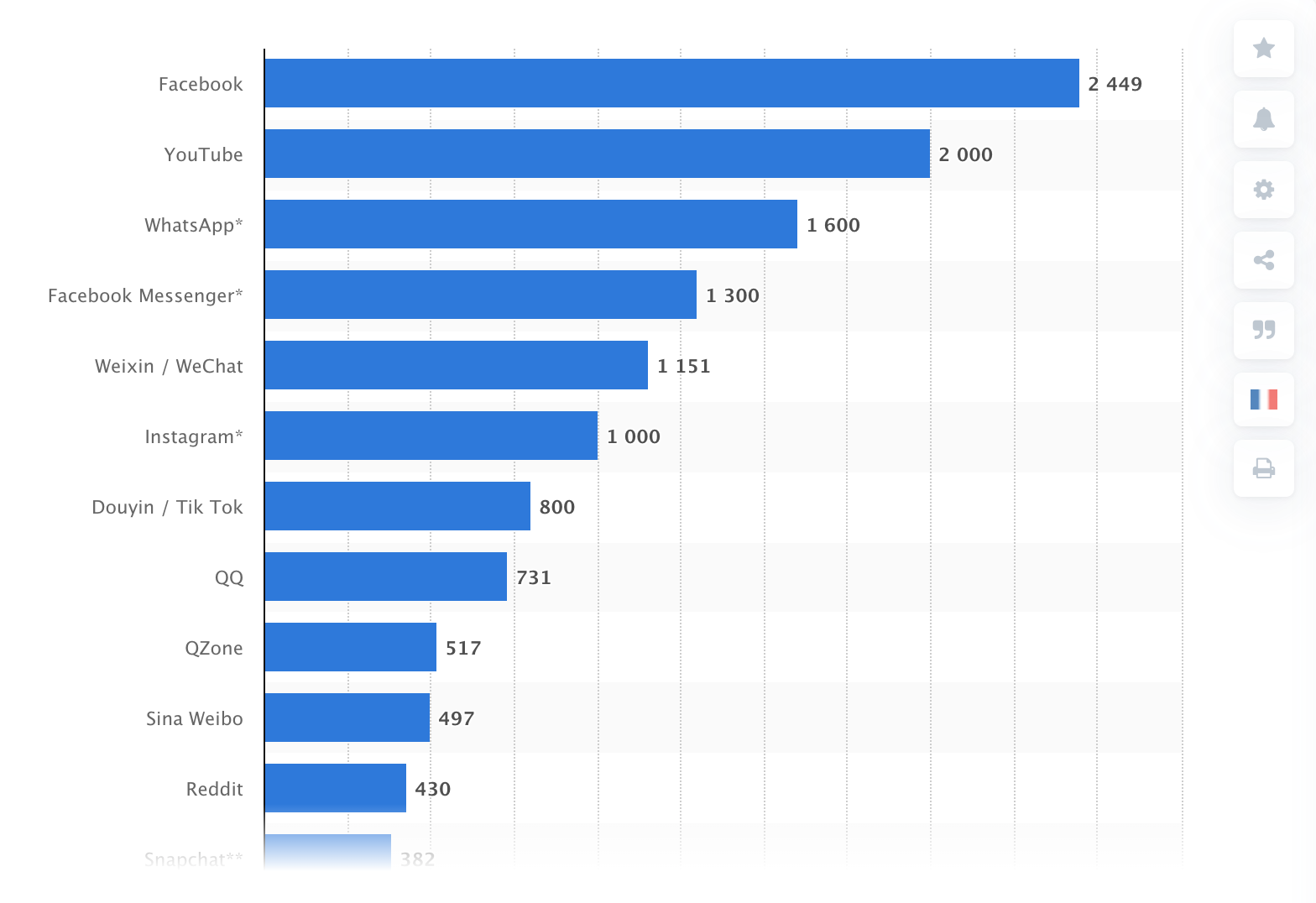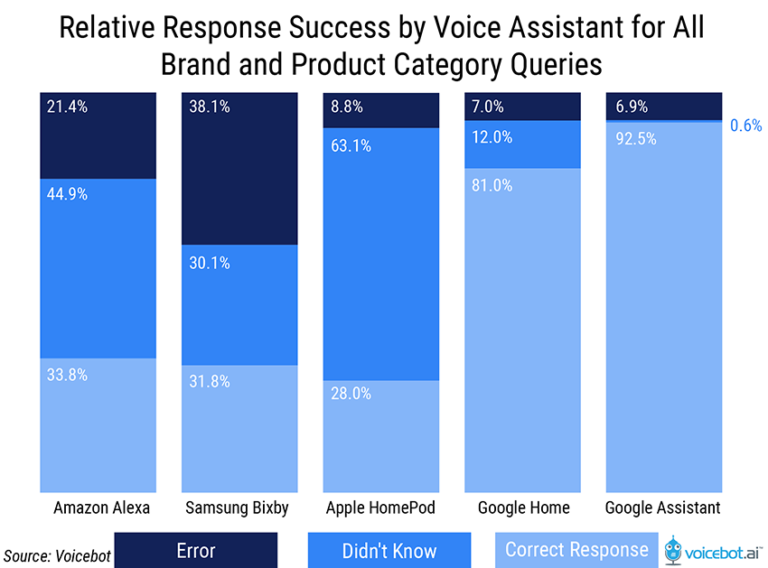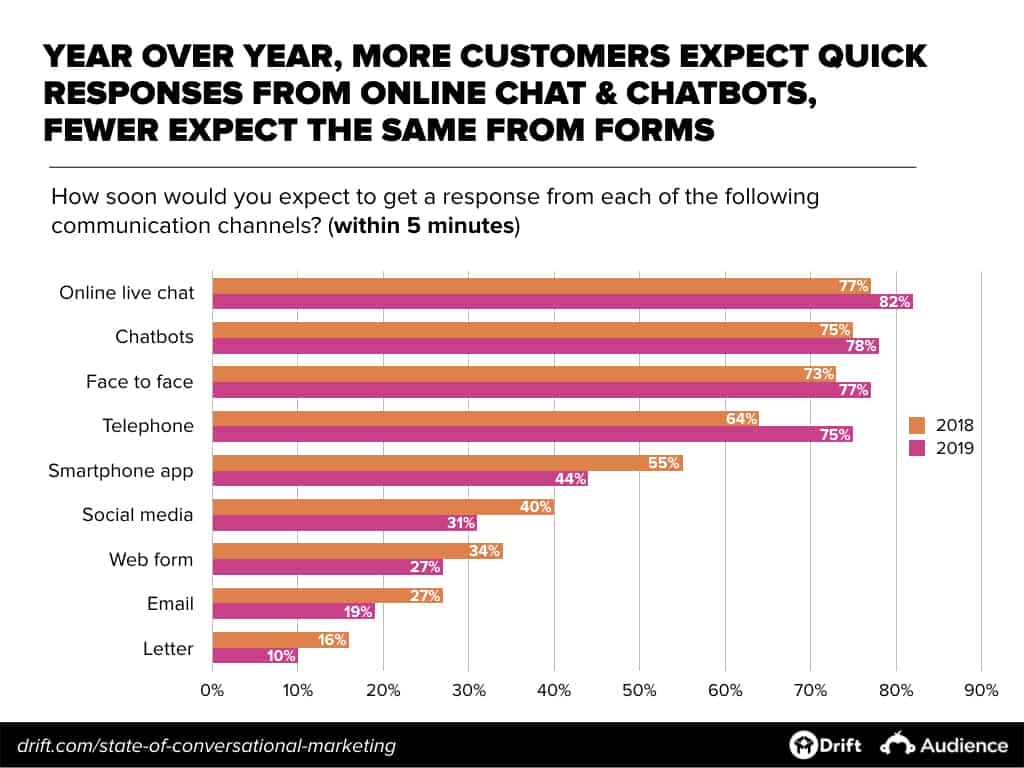9 Changes Businesses Should Adapt to Survive Today
The stock market crash of 2020 and the COVID-19 pandemic are likely to reshape society and reorder the way businesses work. How brands communicate has to be completely rethought. In the nearest days, old digital marketing strategies will become a thing of the past, while new solutions will immediately replace them.
In addition, before switching to new lead generation strategies, most businesses will need to adapt and survive this crisis keeping in mind that the purchasing power of their potential customers has fallen significantly.
How can brands survive the crisis and maintain a trusting relationship with their existing customers and potential clients? Is it possible to raise brand awareness without draining the budget these days? In what research and technology should product owners invest to re-enter the pool competition fully equipped for 2020?
Although these questions might bother you, we are all in the same boat. As a large international company, the team at Depositphotos describes 9 ideas to keep your business stable in 2020.
#1 Invest in AR and make products searchable to decrease your dependence on traditional retail
Terms to learn: shoppable posts, visual search, shopping lens
COVID-19 slammed the doors of restaurants, hotels, and shops, leaving small room for businesses that distribute essential goods or provide customers with basic services. The best thing that businesses can do in this situation is to make their product more accessible to a global audience using new technology. Consider integrating visual search APIs and making the most of shoppable posts.
In 2020, online shopping experiences became even more similar to offline ones. Shoppable posts offering to visit product pages and buy a product directly from Instagram are already used by brands in the US, the UK, Brazil, and some other countries. In light of this, we see the development of AR and shopping lenses, which turn the cameras of users’ mobile devices into fitting rooms (example: Shop the Look Pins on Pinterest).
Visual search also makes an online customer’s experience better. The technology originally introduced by Pinterest (Pinterest Lens) and Google (Google Lens) is based on image recognition which is now on the top of digital trends.
In 2020, the visual search continues to expand opportunities for multichannel marketing. In brief, a visual search feature allows users to make almost any object from their offline environment shoppable or scan any internet picture to estimate it and then buy in one click. Our advice for brands is to work on images SEO and upload even more product pictures on your website.
Explore cases: Amazon Cards created in collaboration with Snapchat, Shopify and Pinterest collaboration, visual search tools by Boohoo.com and PrettyLittleThings, Google Images search engine and Google Shopping.
#2 Use new communication channels together with traditional ones
Terms to learn: omnichannel marketing, niche social networking
What unites all the people who stay at home because of quarantine? They spend more time on the internet and compensate for the lack of personal communication by spending even more time on social networks.
In 2020, Facebook reached 2.23 billion active monthly users and YouTube with its 1.9 billion active monthly users dominate the social media market. That’s why most global brands invest in digital advertising and content marketing on these platforms. This situation made Facebook, as well as YouTube, overflow with ads and big brand messages. Hence, to reach your audience on these platforms you need to compete with the best marketers and creators.
And while there is a recession, not every business can afford a competition for user attention with giant brands. Instead, everyone can apply omnichannel marketing. The idea behind it is to communicate with potential customers on all possible platforms, including niche social ones. The approach could be confused with a multichannel one so let’s clarify it.
According to the omnichannel marketing concept, businesses utilize multiple marketing channels and connect them into a user-centric structure. In this case, each of their marketing channels including various social networks, lifestreams, emailing, customer assistance, and offline communication empower one another.
To optimize budget spendings and increase conversion, we encourage you not to invest blindly into unique content for Facebook, YouTube, Snapchat, Twitter, or Instagram. Instead, discover how you could match all your communication channels and build a perfect sales funnel with their help. Check communication through alternative social networks (Pinterest, TikTok, or Twitch) and decide if they could strengthen connections between you and your customers; and if so, at which stage? You can also use niche social networks dedicated to your business area!
Explore some niche networks of 2020: TikTok, Reddit, Pinterest, Flixster, imeem, and others.

source: Statista, top social networks of 2020
#3 Motivate people to strengthen your brand message and share in any way they want
Terms to learn: user-generated content (UGC), micro-influencers
In 2020, user-generated content will dominate the social media market and will reorder some of the digital marketing trends predictions. Naturally, it is forecasted to become the major way for brands to communicate their messages concerning brand values, new product lines, or sales. UGC based on a brand’s content can take various forms including simple posting with brand tags, interactive group streaming, Stories with brand face filters and many others. The more options for interacting with the brand content you create, the more impressions you will get from the users’ side.
If you haven’t experimented with social flash mobs, polls, and tests, start with them. If your brand has already passed this stage, switch to more technologically advanced and holistic user-generated content stimulation strategies like Instagram filters QR-codes integrated into offline shopping experience.
Remember that your info campaign should be aimed at a particular audience and broadcast a big idea. This is the only way you can reach micro-influencers (most of your audience) and make them tell their friends about your product. This is a great opportunity in a situation where you don’t have budgets to attract macro-influencers.
Explore cases: Depositphotos digital marketing strategies (blog and Facebook profile), Instagram accounts of Coca-Cola, Netflix, and Apple

#4 Create sales funnels considering customer emotions
Terms to learn: ML, customer emotions recognition (detection), social listening, neuromarketing
Emotions drive human behavior. They have an impact at the time of making purchase decisions, determine a customer’s potential to buy similar products, and even result in them choosing to be loyal to a brand. And while in previous decades brands tended to use emotional triggers almost intuitively (remember dynamic music in shopping malls and lovely use cases on websites), now we’ve got a real opportunity to detect and analyze the emotions of users.
As a result, web platforms and apps can show different content for people with different emotions and let them buy a product or subscribe to a brand’s page on Facebook in a personal (and more efficient) way.
In brief, neuromarketing is a marketing communication field that seeks connections between a user’s emotions and their buying behavior. The earliest examples are built-in eye trackers on apps and beacon technology which has been already implemented in offline stores in the US. And the most popular tool to learn your customer’s emotional background is to integrate anchors to your pages or use social tracking platforms such as Hootsuite, SumAll, or HubSpot. Using them you are able to detect reactions on your social media content and read comments with brand mentions. That will help you rebuild the sales funnel by being aware of what people really feel when they interact with your brand.
Remember that a customer’s emotion could differ within one customer-brand interaction: people feel excitement while unpacking products, feel anxiety while dealing with unclear instructions, or can feel overwhelmed when an online shop assistant tells them how to complete the delivery form. Remember that any emotion is a chance for you to sell your product by better appealing to people.
Explore cases: PayPal that made people buy more frequently by making them happy with the speed and ease of payment, Visa social listening campaign conducted on Twitter.
#5 Review your SEO strategy and work on VSEO integration
Terms to learn: multilingual SEO, VSEO, local SEO, Rank Zero Snippet
Search optimization is one of the determinants of your commercial success online. Social networks remain a channel for interacting with your potential customers, while the Google search engine allows you to be searchable and noticeable for everybody. And look: there are more people who use Google than people who spend time on social networks!
While your offline stores do not work, make your online platforms (and the products there) easy to find for users.
Firstly, refresh your keywords, rewrite page titles and descriptions, taking into account the changes in the list of popular words. It is possible that your potential audience is already using other keywords to find the products that you sell. Don’t lose them!
Secondly, strengthen your position with local SEO. Perhaps, in your target region, unusual keywords are used to find products or services. Another option: make your business visible on Google Maps and use the company description field to tell consumers about your business.
Thirdly, discover the potential of VSEO (voice search optimization; do not confuse with video SEO). Voice assistants powered by AI are among the digital trends of the current decade. Lots of people use voice assistants in their homes or on their smartphones these days avoiding direct contact with devices. IoT infrastructure is evolving. The bad news is that the voice assistant only reads the Rank Zero Snippet to users. For your page to receive this status, you need to convince Google that you really know how to help users.

The percentage of correct responses from voice assistants; Google won the competition!
Free tools to explore keywords: Google AdWords (Keyword Planner section), Soovle, Also Asked, Jaaxy
#6 Build a conversational sales strategy
Terms to learn: conversational marketing, user journey, live chat and chatbots
Conversational marketing is still a moderately new approach to digital marketing. With the advent of quarantine, this customer service method has become more relevant than ever. It allows companies to save money on assistants who respond to clients through live chats. Online chatting is also a safe way to contact customers.
Why is conversational marketing considered so effective? To answer this question, we need to recall a typical user journey of 2020. Year after year, more info about products comes to potential customers through the internet. They try to learn more about the product and the manufacturer with social networks, as well as evaluate the opinions of real people about those products. Moreover — 79% of users are willing to use messaging apps to get customer service.
The most natural way for a user to contact a manufacturer or a store is to write using the tools that they have at hand (a social network messenger, less often — an online chat window on a site or in an app). Remember that the sooner you begin to communicate with a client in person, the bigger is the likelihood of a purchase.
An important thing to know about live chat and chatbots in 2020: chatting in messengers becomes more personal. Why? If the style of your communication in a messenger matches the style and emotional context of your brand as a whole, users are more likely to remember you.
Explore WhatsApp chatbots: Pandora, WHO Health Alert chatbot, Andy the English Speaking bot, MakeMyTrip

source: State of Conversational Marketing
#7 Become memorable opting for long-form content
Terms to learn: long-form content, podcasts
Before 2020, many marketers preferred content digital marketing strategies, in which the main place was occupied by expert materials of 700 words or less. However, in modern conditions, short articles don’t work as well. The main reason: Google gives top positions to pages with texts of more than 2000 words.
Of course, if there are few competitors in your competitive niche, even short materials can work. But even in this case, you lose a lot. Receiving a significant influx of traffic to your site, you increase the bounce rate simultaneously, keep rates of user returns low, and have low involvement metrics. What is the reason for that? If a user spends less than 3 minutes on your site reading materials, they will hardly remember even the name of your platform.
The conclusion that comes to mind: the current economic lull can be used to produce long-form content. Keep in mind that this type of content includes not only long reads, but also long videos (up to 15 minutes for YouTube), and podcasts.
Experiment with them, but remember that the bounce rate of your long-form content will be huge if you set it up SEO, but did not fill in articles’ structure with useful information. To avoid this common mistake, do not create content for the sake of content, but focus on studying the audience before formulating a content plan.
#8 Try thoughtful hype content marketing
Terms to learn: flexible editorial plan, over-hype, under-hype
In marketing, there is no such term as hype marketing. However, hype is useful for business (especially if the advertising budget is small), as it allows brands to invest low costs in the promotion.
So again, what is hype? Hype is extravagant or intensive publicity of some issues. A clear sign of hype is viral content distribution. There are a lot of examples of hype. The TikTok social network has become popular because of the hype around it. Coronavirus triggered a chain of hype events: some streetwear brands were able to earn on custom respirators production, others got a boost in Instagram due to the spectacular thematic face-filter.
And if you want to gain profits out of hype waves, choose one of the digital marketing strategies: using existing hype and hype generation.
Using hype to satisfy your business interests means that you need to be flexible in your content strategy. We are talking not only about content for social networks. If your content strategy is holistic and includes every channel you use to communicate with customers, you are more likely to reach an audience and use their emotions to sell products.
Track trends on social networks daily and learn to adapt to them instantly. Caution: respond to a hype event before it becomes outdated.
Hype generation, in its turn, is a science. Begin exploring it from the hype cycle for technologies concept described by Gartner in 1995 and updated last year. To become hype your product or message should be innovative and surprising. Your potential hype content should be supported with emotional visuals. With the help of social networks, it will be self-distributed. Then, user-generated content will arise and your brand awareness will grow.
Explore cases: Apple creative campaigns, TikTok challenges, hashtag campaigns on Instagram
#9 Think long not short: consider project leadership transformations
Although some brands may suggest that the best tactic is to remain flexible and save resources, we encourage you to start adapting your business in light of these changes right away. Why? Remember that a crisis is a period of market renewal. Some of your competitors may disappear over these months, giving you part of the market. But will you be ready to meet the customers growing expectations with your old tools?
Keep an eye on upcoming marketing trends, continue building warm relations with your customers, unite communication channels into one strong unit, and ensure that your brand and product are always relevant. Use the latest digital marketing tips and consider that, at Depositphotos, we’re here to help you find the right visuals to accompany any project.
Final thoughts
No matter how threatening the current crisis may seem, sooner or later it will be replaced by a period of economic thaw. The digital trends that you can start following right now will help you win amongst all the competition in a few months.
Remember that now you’ve got an important business resource called time. Spend your time studying competitors, updating SEO, upgrading sales funnels, and working on your content plan. Technical innovations that have already influenced marketing trends are also worth your attention.
And there is one more reason for keeping your spirit high: while you reorder your business and set new marketing priorities, your employees invest their quarantine time in learning new technologies and developing valuable professional skills. This means that your team will come out of all this even stronger, and more adapt to unexpected, stressful, and challenging changes in the market.














